10.3 Part Writing, First Inversion Triads and Suspensions: Tutorial
Part Writing First Inversion Triads
Most phrases in tonal music use at least one inverted chord. Inverted chords are often used to create forward motion, since chords become less stable and more prone to move the farther that they get from their root position counterparts. Inverted chords are used to improve the contour of the bass line and to provide greater interest and variety in the bass voice. They can be used to weaken the strength of I and V chords within a phrase that do not serve as goals of the harmonic motion. They can also be used to prolong harmonies and expand the progression. Look at the following examples.
The example below improves the contour of the bass line, making it smoother, more interesting, and easier to sing. It also shows how inversions can lessen the weight of V and I chords that do not serve as goals in the progression. In addition to creating a smoother, more interesting bass line, the second version of the bass line ensures that the most prominent root position V-I progression is at the final cadence. All other V chords within the phrase are in inversion to lessen their weight and impact in comparison to the final chord.
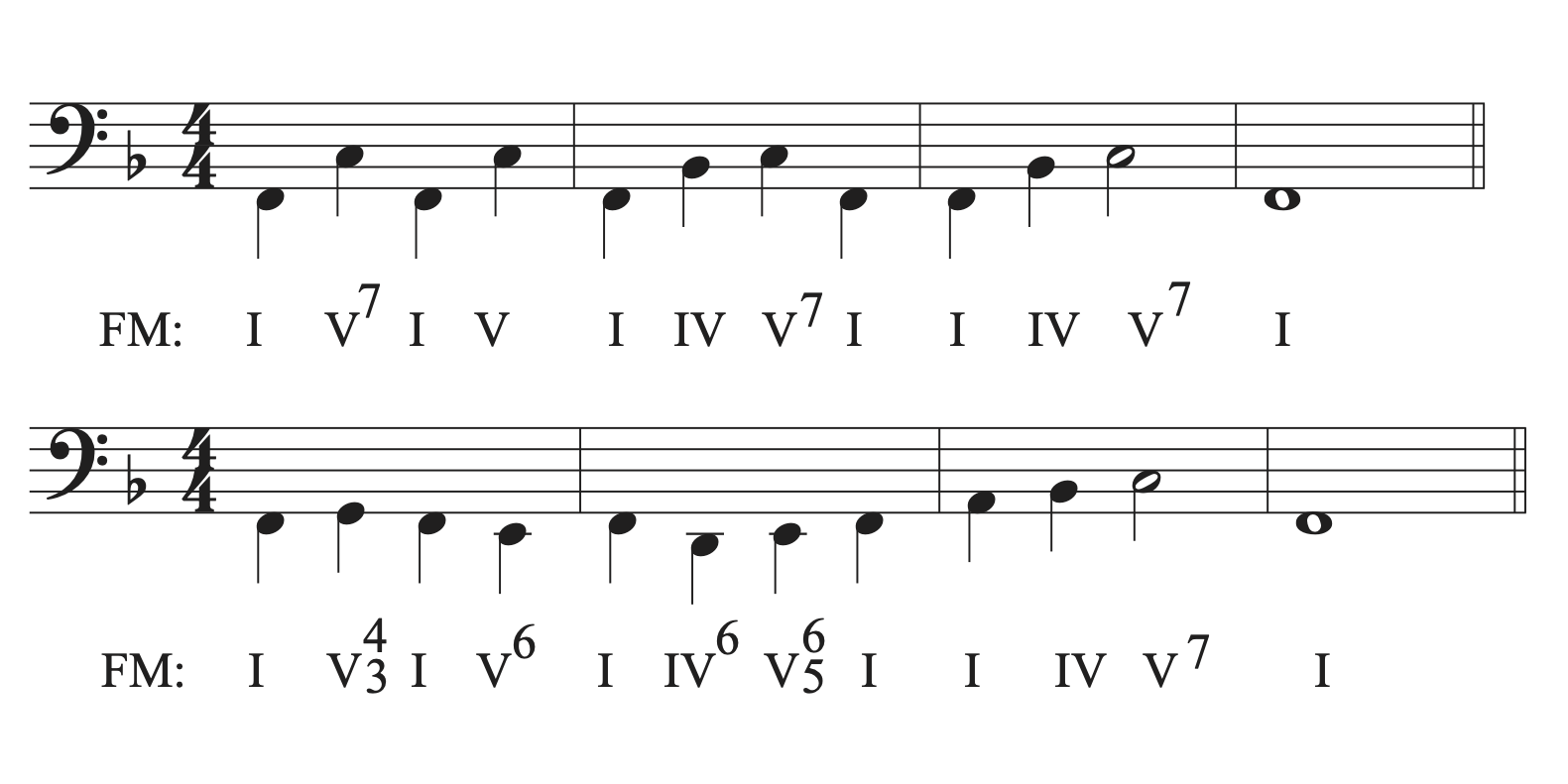
The example below uses a first inversion V chord to prolong the tonic harmony to expand the progression and provide interest.
.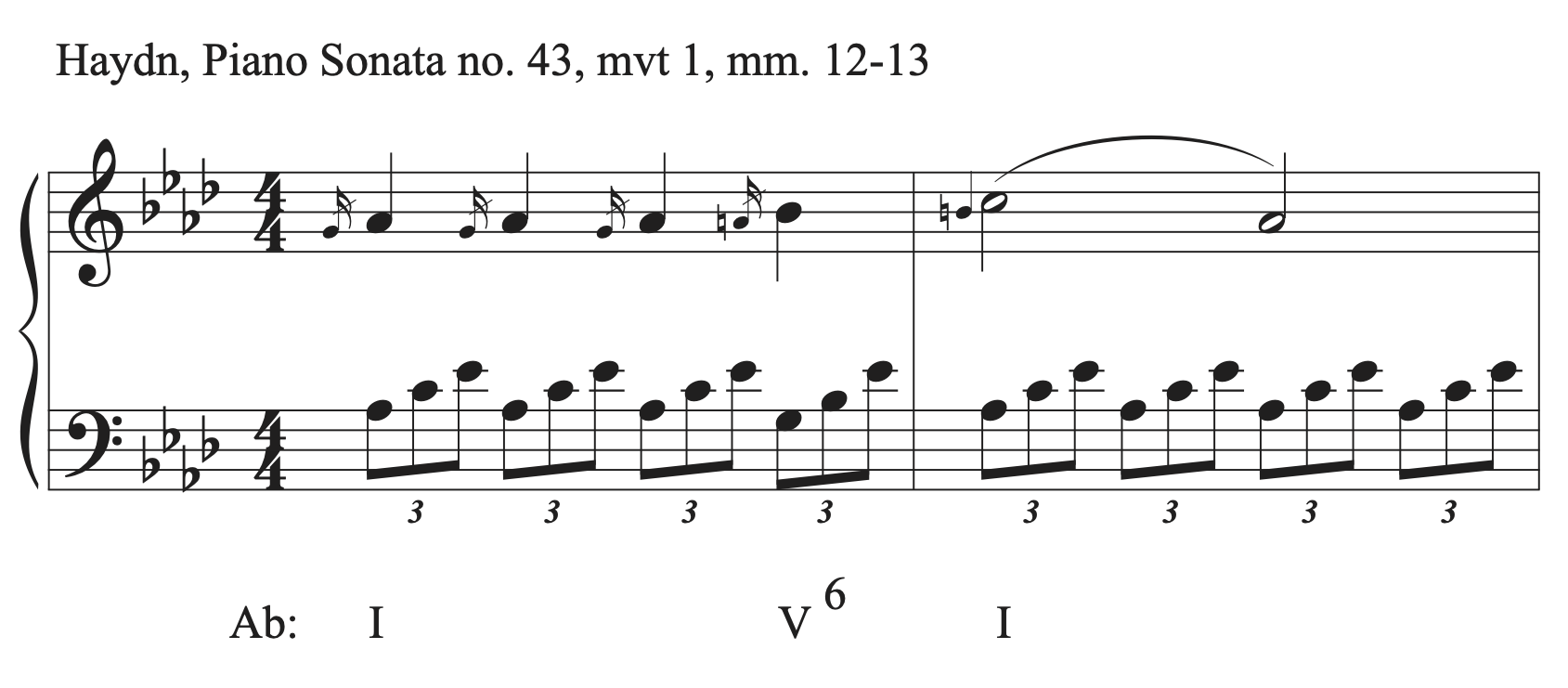
Though most first inversion triads can be substituted for their root position counterparts, the use of diminished chords in root position compared to first inversion, and the use of the vi chord in first inversion need more explanation.
Diminished triads
As was mentioned when discussing rules of doubling and chord choices for part writing with root position chords, diminished chords are almost always used in first inversion. As you can see in the example below, first inversion is the only inversion in which there is no diminished 5th or augmented 4th created above the bass. That means far fewer part writing errors are possible when writing with first inversion diminished chords.
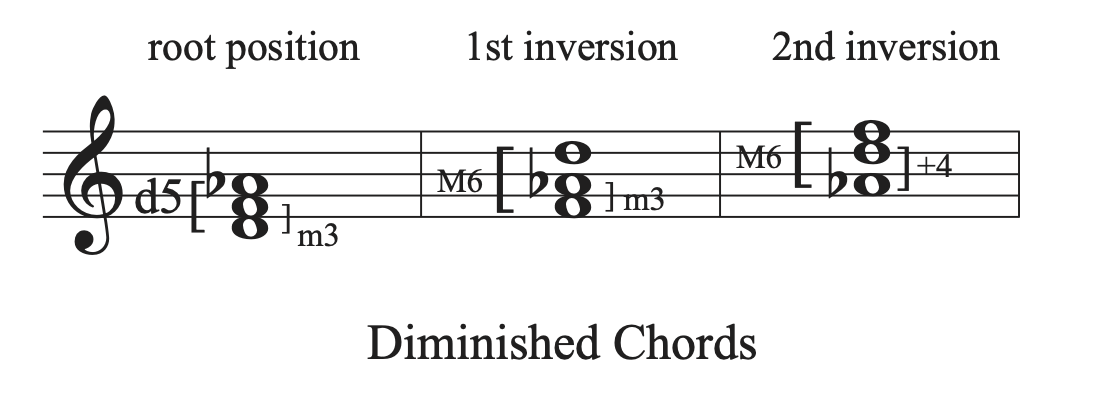
vi6
Though most first inversion chords can be substituted for their root position counterparts, vi6 should not be substituted for vi when coming from a root position V chord. While V-vi with both chords in root position is a standard progression, V-vi6 sounds like a mistake.
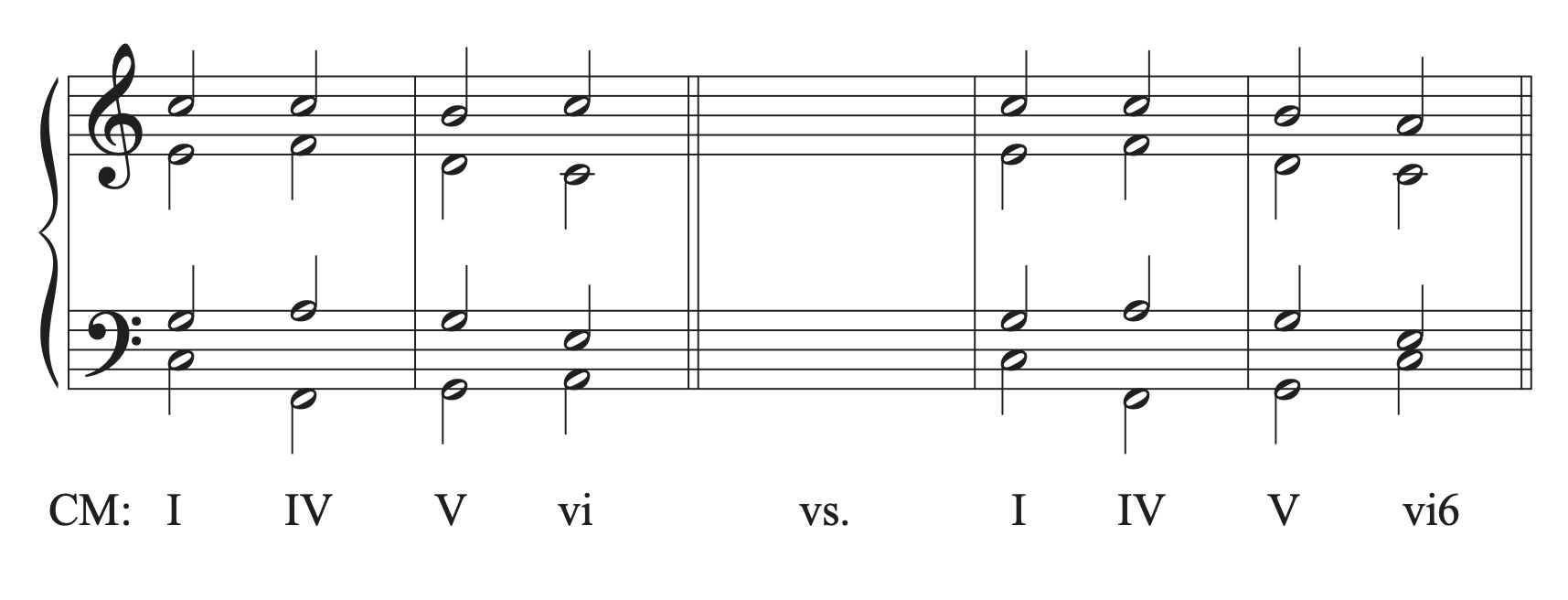
We often find vi6 used as part of harmonic sequences or to expand the harmony between I and ii, which helps avoid parallels between the I and ii chords.
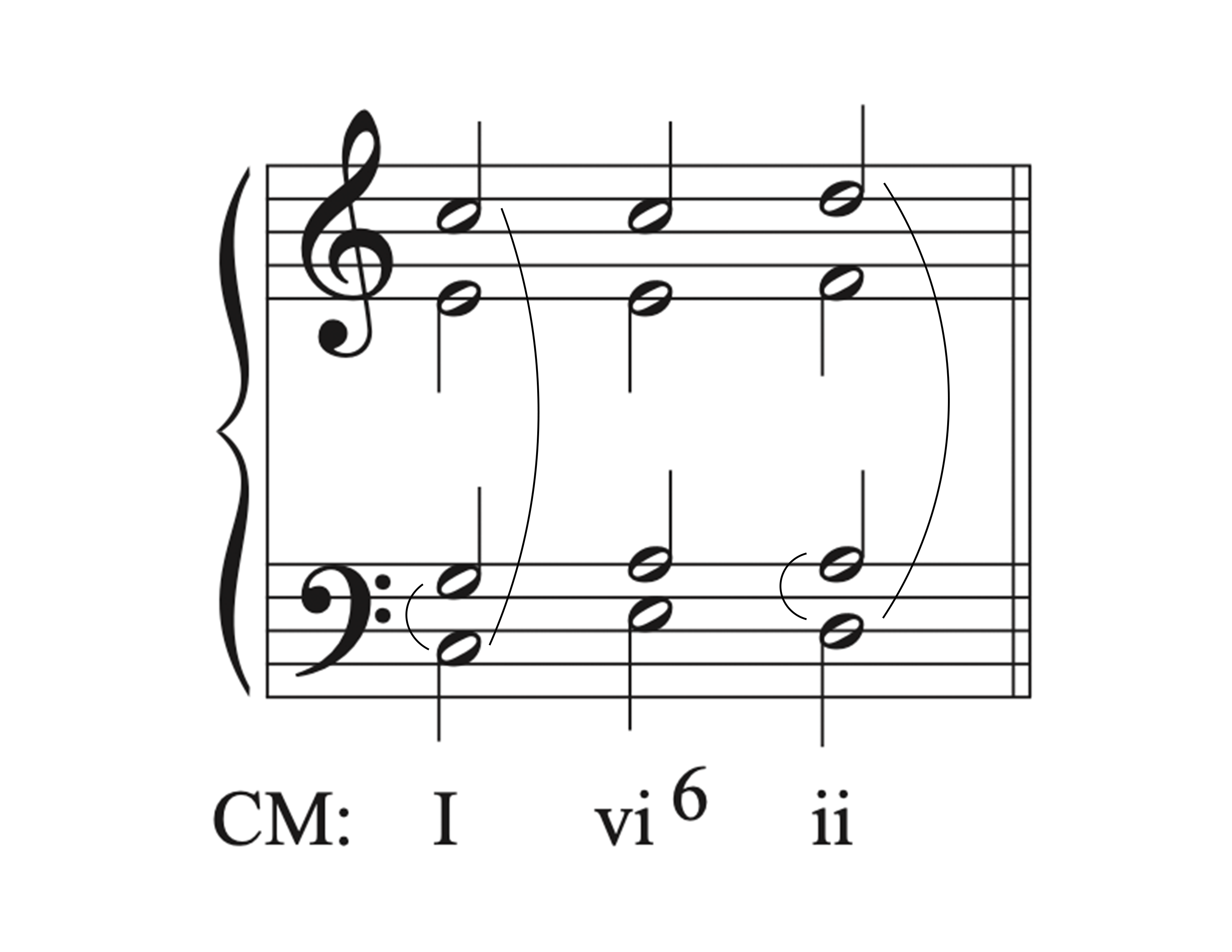
Part Writing First Inversion Triads
A greater degree of freedom is available when writing with first inversion chords due to the flexibility in doubling.
Part writing guidelines for first inversion triads:
- Doubling
- Major and minor chords: Any note can be doubled as long as it is not a tendency tone (do not double the leading tone).
- Diminished triads: double the 3rd (bass).
- Correct spacing, smooth voice leading, and avoiding all part writing errors still apply.
- Triads are normally complete. The fifth is most frequently omitted if the chord is incomplete.
- Use common tones to connect chords when possible.
- If common tones are not possible between chords, move the upper voices in contrary motion to the bass when possible.
Part writing first inversion chords with Suspensions
As we learned from adding suspension when part writing root position chords, you must follow the guidelines for part writing the chords without the suspension first, making sure to avoid any part writing errors. Then, add in the suspension. You cannot use a suspension to avoid part writing errors.
9-8 and 4-3 suspensions are used over chords in root position. 7-6 and 2-3 suspensions are over chords in first inversion.
There are two elements to consider when writing suspensions over first inversion chords that were not listed when writing suspensions over root position chords.
- Due to the flexible doubling on a chord in first inversion, it is often easier to write the first chords, find the suspension voice, then fill in the rest of the second chord, making sure that there are no errors (both without the suspension and with the suspension).
- Make sure not double the leading tone or the resolution note of the suspension.
Summary of part writing with suspensions over first inversion chords
- Part-write the first chord without the suspension first, following all part writing steps and guidelines. Check for errors. You cannot use a non-chord tone to fix part writing errors.
- Locate the voice that will create the correct suspension numbers.
- The bass voice in the second chord will form the correct resolution interval with one of the upper voices (the resolution interval is the second number in the suspension label). That voice will get the suspension. If there is no voice that will work for the chosen suspension, revise the doubling on the first chord (if the chord is in first inversion and has that flexibility).
- Make sure that the chosen voice can be suspended from the previous chord, meaning that it is coming from a step above in the previous chord.
- Insert the suspension note and resolution.
- Double check the rhythm and vertical alignment of beats in the bar.
- Chose a tied suspension or an articulated suspension.
- Label the suspension
- Put the non-chord tone in parenthesis.
- Write the suspension numbers and SUS near the suspended note.
- Part-write the remaining voices in the first inversion chord.
- Do not double the leading tone
- Do not double the resolution note of the suspension
- Check for errors
Proceed to the theory exercises for guided examples on part writing with first inversion triads.

